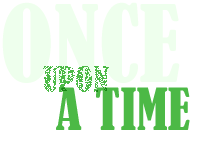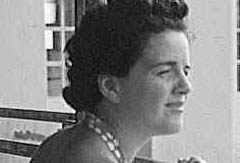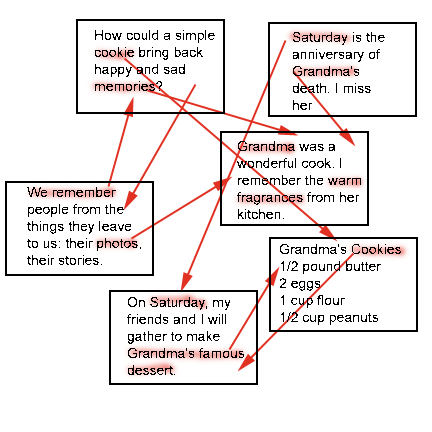 |
|
||||||||||
|
 |
|
||||||||||
|
M.E. Sokolik
UC Berkeley
<sokolik@socrates.berkeley.edu>
 Storytelling
and narrative are important to both old and new models of second language pedagogy
and learning. From the telling of personal experiences to the writing of more
formal narratives, students have long been encouraged to tell stories in the
service of learning a second language. Teachers recognize, either implicitly
or explicitly, that story plays an important part in comprehension. When we
add the possibility of publishing stories on the web, then the power and possibilities
of stories become vast.
Storytelling
and narrative are important to both old and new models of second language pedagogy
and learning. From the telling of personal experiences to the writing of more
formal narratives, students have long been encouraged to tell stories in the
service of learning a second language. Teachers recognize, either implicitly
or explicitly, that story plays an important part in comprehension. When we
add the possibility of publishing stories on the web, then the power and possibilities
of stories become vast.
In the language learning context, stories obviously provide a medium through which students produce language. Stories also address comprehension goals: language learning and literacy depend not merely on the understanding of the linguistic construction of a story, but the cultural presumptions and context for it. According to Mark Turner in The Literary Mind: The Origins of Thought and Language:
Narrative imagining--story--is the fundamental instrument of thought. Rational capacities depend upon it. It is our chief means of looking into the future of predicting, of planning, and of explaining (1996, p. 4).
Digital storytelling is the production of narrative using tools of digital media. This type of storytelling is most commonly associated with digital video, a type of linear narrative. However, the web is a good environment for hypertext or interactive storytelling. Additionally, the tools needed to create web pages are more readily available than tools for video creation, and the ability to publish or receive video via the web is still somewhat limited (though changing rapidly).
Although some may argue that storytelling is storytelling, and that digital tools are not necessary to the process, in fact, multimedia stories are motivational in the educational environment. Nicholas Negroponte of MIT says:
…[A] major measure of learning results from exploration, from re-inventing the wheel and finding out for yourself. Until the computer, the tools and toys for these experiences were limited, special-purpose apparatuses, frequently administered with extreme control and regimentation…(1994).
Bolter and Grusin add to this point by saying that "we employ media as vehicles for defining both personal and cultural identity" (1999, p. 233). In other words, digital publishing of stories provides students an opportunity to experiment and explore, to use language meaningfully, and to define themselves in a cultural context.
Methods for Web Storytelling
Hypertext stories are challenging, even for (or perhaps especially for) accomplished writers. The best hypertext stories are, by definition, nonlinear. That is, they allow the user to enter and explore, rather than simply be led through in a strictly linear fashion. Thus, the pieces of the story, the individual web pages (also called lexia) must each stand on their own.
What follows is a step-by-step approach to coaching students through the interactive story-writing process. This presents only one set of possibilities, of course.
The typical elements for a web story are:
| 1. writing | 3. navigation plan (storyboard) |
| 2. graphics: drawings or photos | 4. Internet web space* |
*Web pages can be run off of a local computer, they need not be put on the Internet.
1. Writing
Students will need some preparation in learning to write in a nonlinear fashion. One activity that addresses this is as follows:
Give students six (or whatever number seems reasonable to you) index cards or pieces of paper, with the following instructions:
Think of a story or event that is important to you. Tell that story, but in a way that each part of the story is separate. Write each part of the story on a separate card. Number each card on the back, 1-6. After the story is written, shuffle the cards and hand it to a partner, and have the partner read it aloud. Does it still make sense? If not, revise it.
Since this may be difficult to imagine, here is an example: I have purposely put the cards in an order that may seem odd, so you aren't directed to read them in any particular way.

Figure 1. Nonlinear story writing example
2. Graphics
Although graphics are not essential to an effective story, they add a useful dimension for conveying meaning. Rather than being a mere illustration of what the words say, they can be seen as additional text in the story. We'll revisit the story above, and put in some sample graphics.
 |
|
| photograph of grandmother | handwritten recipe |
 |
|
| photograph as a child | photo for establishing mood |
 |
Notes on graphics: Photographs should be saved in jpg format, at 72 dpi for the smallest download time and file size. Drawings should typically be saved in gif format, using the export gif 89a option. Consult your graphics software documentation for how to implement this. |
| ingredients |
The graphics are typically created by scanning photographs or drawings, or using digitally-produced images. Sound and video files can also be incorporated. For simplicity, we do not include these elements here.
3. Storyboard
Once students have completed their writing, they should begin to conceive of a navigation plan. A simple way to approach this is to glue the cards they've written to a large sheet of paper and use highlighters or markers to indicate where links should go.

Figure 2. Navigation Plan
After all the planning is done, students can then use a web page editor or HTML coding to put together their pages. All pages need to be organized within a directory or file folder. It's easiest if they have one folder to put all files in. Additonally, within that folder, they may have a folder for images or other media. Following this link will show an example of the above story in its final form. Clearly, this is a very simple example, but it shows the possibilities of this medium, even at lower levels of language or technical skill.
4. Internet Web Space
In order to be available to a global audience, web stories need to reside on a web server. There are many commercial, nonprofit, and for-profit spaces available. However, web sites can run locally off of one computer, or over intranets. If students use copyrighted work in their pages, they should not be put on the web, but used only locally for class purposes.
Examples
The following links will take you to sample student work from 1999 and 2000, in my Advanced Writing class called "Digital Storytelling" at the University of California, Berkeley.
| Alberto Palomar | Jesus Gutierrez | Elle Ghandi | Nathan Kim |
Conclusion
Web stories provide an opportunity for students not only to read and comprehend English, but also to produce language in a form that is meaningful and personal. As published stories, they provide a real sense of audience, and thus motivation for students to do high-quality work. The stories can be as simple or as complex as the students are prepared to make them. Encourage your students to write and develop stories that are meaningful, and they will create projects that live with them for years to come.
References
Bolter, J. D. & Grusin, R. (1998). ReMediation: Understanding new media. Cambridge, MA: MIT Press.
Negroponte, N. (1994). Learning by doing: Don't dissect the frog, build it. Wired 2.07. http://www.wired.com/wired/archive/2.07/negroponte.html
Turner, M. (1996). The literary mind: The origins of thought and language. New York: Oxford University Press.